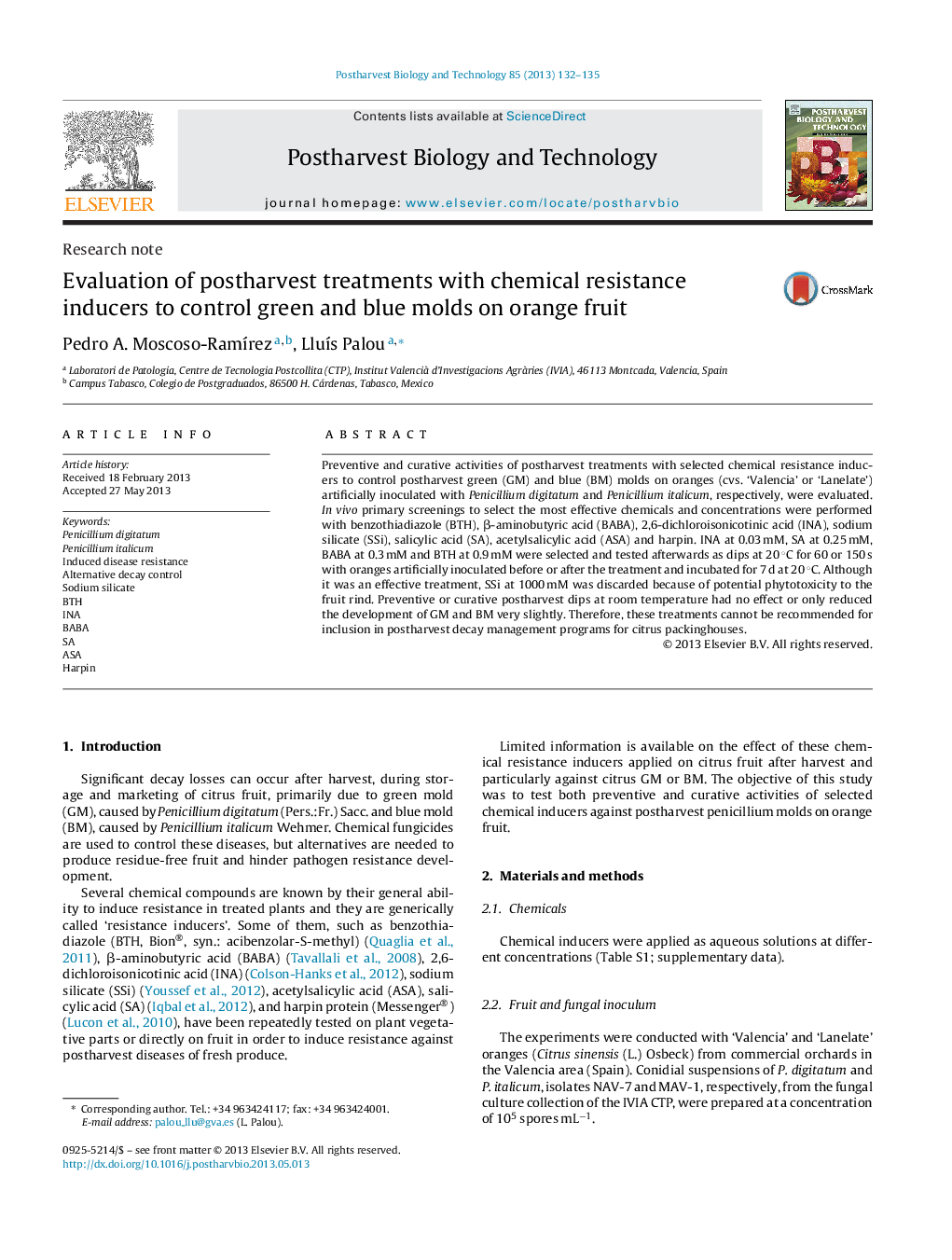| Article ID | Journal | Published Year | Pages | File Type |
|---|---|---|---|---|
| 4518409 | Postharvest Biology and Technology | 2013 | 4 Pages |
•Postharvest treatments with BTH, BABA, INA, SA, ASA, sodium silicate and harpin were tested.•INA at 0.03 mM, SA at 0.25 mM, BABA at 0.3 mM and BTH at 0.9 mM were selected in in vivo primary screenings.•SSi at 1000 mM was an effective treatment, but residues in the fruit rind might be phytotoxic.•Preventive or curative dips at 20 °C for 60 or 150 s had no effect or only reduced mold development very slightly.
Preventive and curative activities of postharvest treatments with selected chemical resistance inducers to control postharvest green (GM) and blue (BM) molds on oranges (cvs. ‘Valencia’ or ‘Lanelate’) artificially inoculated with Penicillium digitatum and Penicillium italicum, respectively, were evaluated. In vivo primary screenings to select the most effective chemicals and concentrations were performed with benzothiadiazole (BTH), β-aminobutyric acid (BABA), 2,6-dichloroisonicotinic acid (INA), sodium silicate (SSi), salicylic acid (SA), acetylsalicylic acid (ASA) and harpin. INA at 0.03 mM, SA at 0.25 mM, BABA at 0.3 mM and BTH at 0.9 mM were selected and tested afterwards as dips at 20 °C for 60 or 150 s with oranges artificially inoculated before or after the treatment and incubated for 7 d at 20 °C. Although it was an effective treatment, SSi at 1000 mM was discarded because of potential phytotoxicity to the fruit rind. Preventive or curative postharvest dips at room temperature had no effect or only reduced the development of GM and BM very slightly. Therefore, these treatments cannot be recommended for inclusion in postharvest decay management programs for citrus packinghouses.
